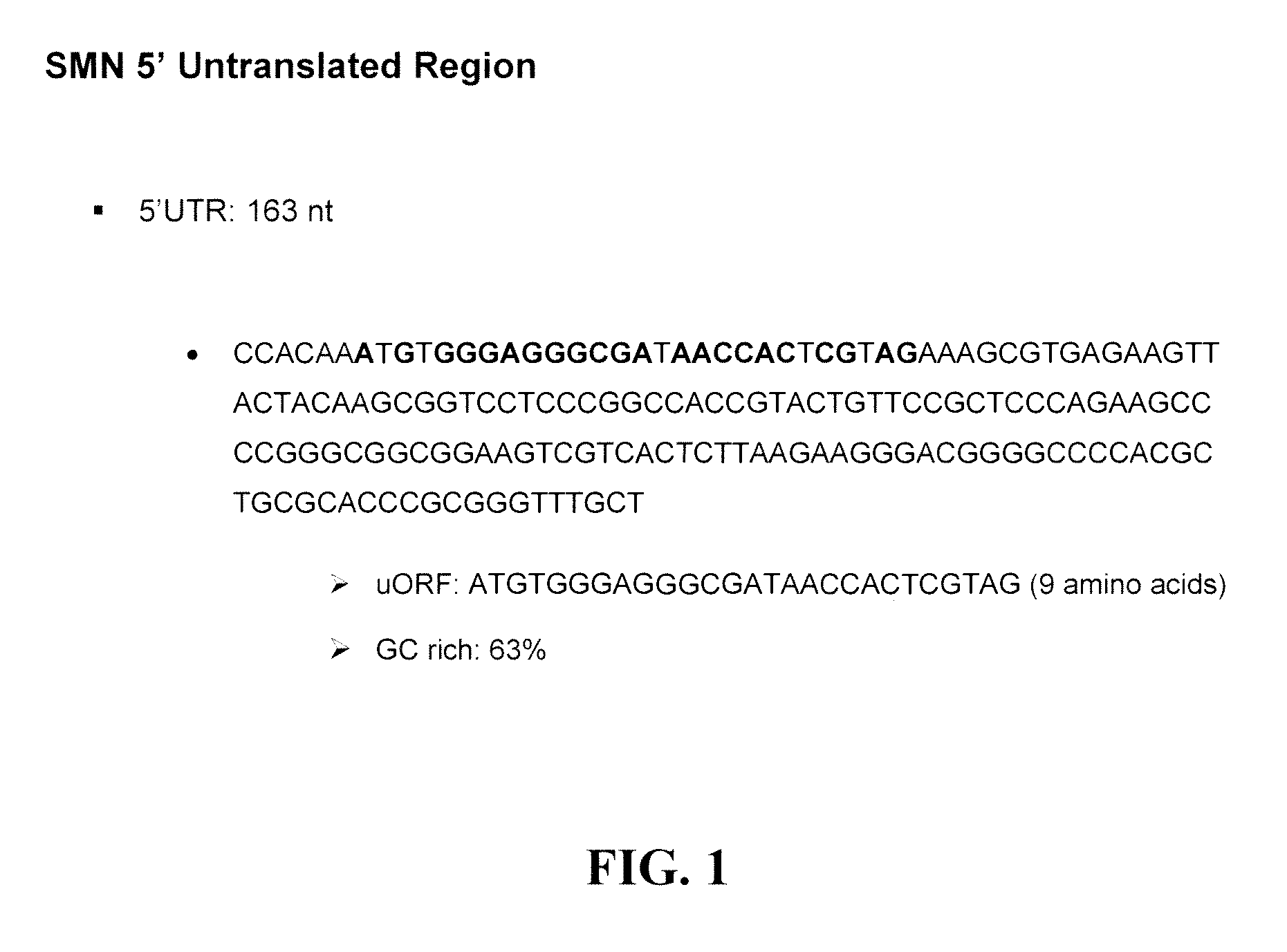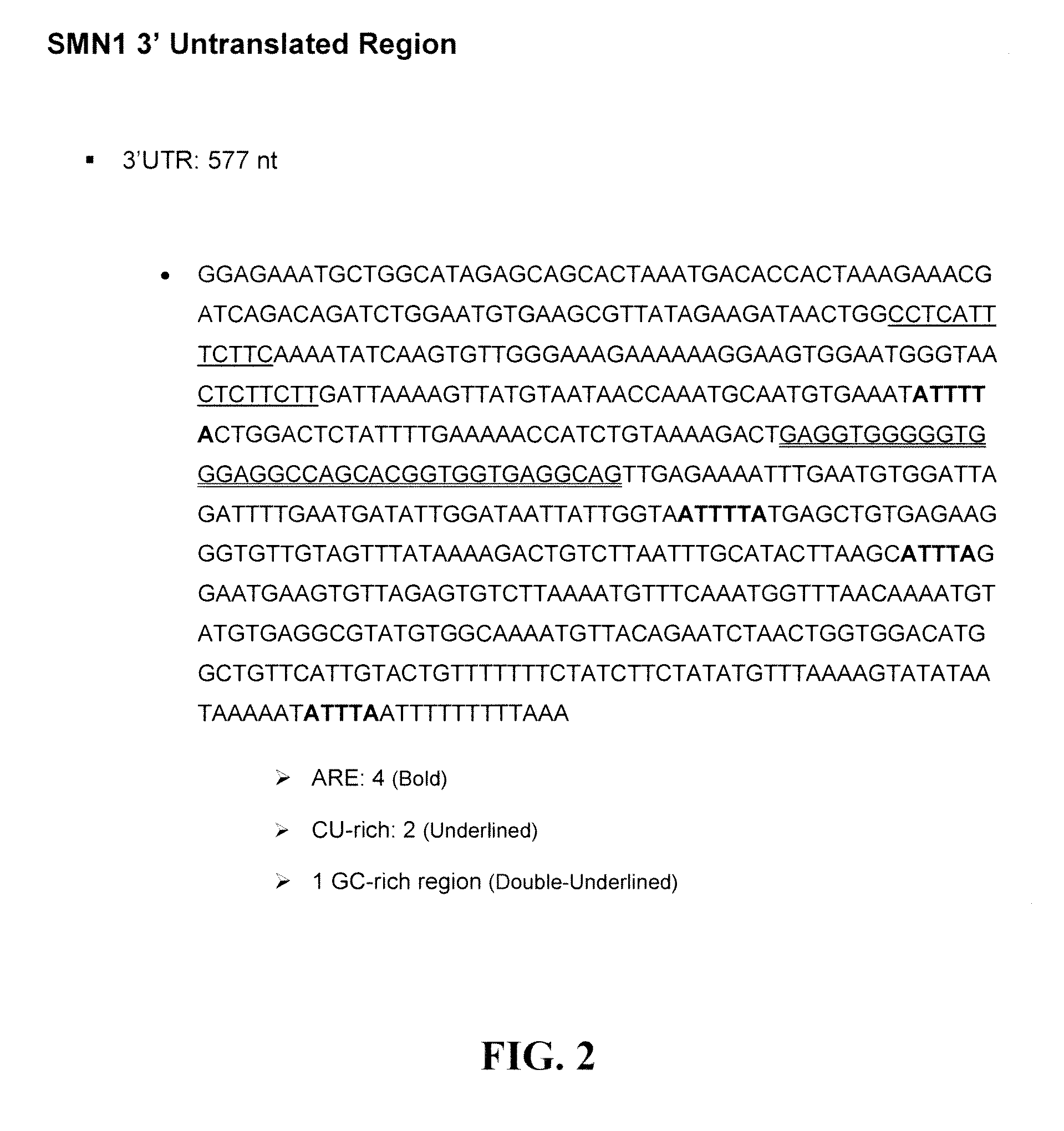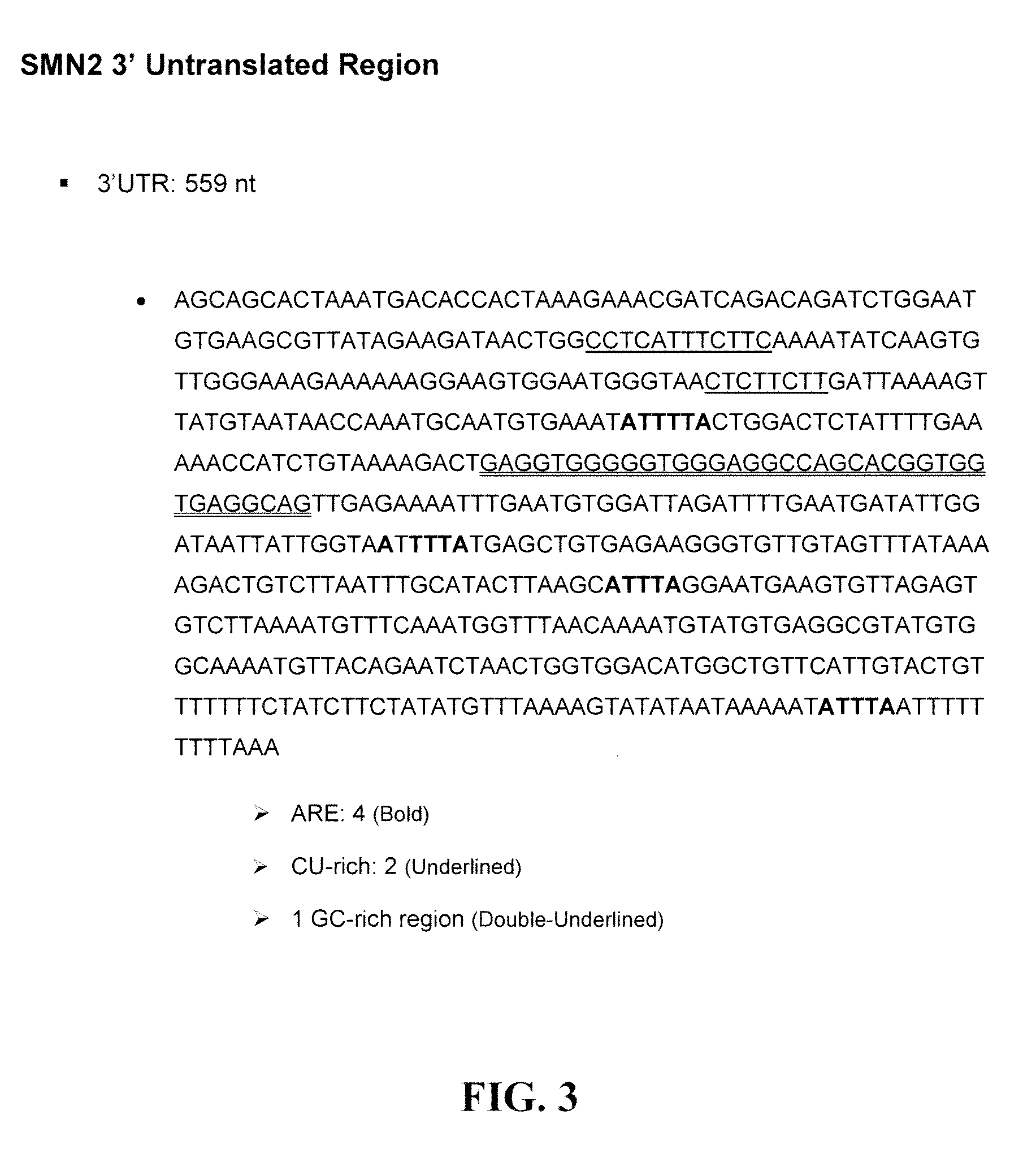Survival motor neuron gene (SMN2) mRNA constructs for post-transcription regulation
a technology of post-transcription regulation and motor neuron gene, which is applied in the field of survival motor neuron gene (smn2) mrna constructs for post-transcription regulation, can solve the problems of small amount of smn protein expressed that does not fully compensate for the loss of smn1, and selective degeneration of smn-deficient motor neurons, so as to reduce the toxicity of each agent, avoid or reduce adverse or unwanted side effects, and improve the effect of each
- Summary
- Abstract
- Description
- Claims
- Application Information
AI Technical Summary
Benefits of technology
Problems solved by technology
Method used
Image
Examples
example 1
UTR-Mediated Regulation of SMN Expression
[0215]As shown in the following examples, compounds that up-regulate the expression of either of the SMN1 or SMN2 protein have been identified or validated and have the potential to treat SMA. The following constructs were generated and used in the assays of the present invention: (i) a construct comprising the luciferase gene operably linked and downstream of the 5′-UTR of SMN; (ii) a construct comprising the luciferase gene operably linked and upstream of the 3′-UTR of SMN2; (iii) a construct comprising the luciferase gene flanked by the 5′-UTR and 3′-UTR of SMN2 (as shown in FIG. 5); (iv) a construct comprising the luciferase gene operably linked and downstream of SMN in which the ATG codon in the uORF was mutated; (v) a construct comprising the luciferase gene operably linked downstream of nucleotides 30 to 163 of the 5′-UTR of SMN (SEQ ID NO:4); (vii) a construct comprising the 5′-UTR of SMN, SMNΔEx7 and the luciferase gene, and the 3′-U...
example 2
Preparation of the Stable Cell-Line
[0227]Stable 293H cell lines containing the firefly luciferase (fLuc) gene flanked by one of SMN1 or SMN2 5′-UTR and 3′-UTR were cultured in DMEM medium supplemented with 10% FBS and 200 ug / mL hygromycin in Fisher T175 flasks. The cells were passaged every 4 days at 1:10 dilution. Cultures are kept in a 37° C. and 5% CO2 incubator. The cells were scaled-up over a three day period before performing the assay. Two confluent T175 flasks were split into twenty T175 flasks (1:10 dilution). Cells were harvested from each confluent flask by removing all of the media and adding 4 mL of warmed trypsin to dislodge the cells. After the cells were dislodged, 16 mL of selective media was added for a final volume of 20 mL. The cells were expanded by adding 2 mL of the harvested cells into ten new T175 flasks plus 25 ml, of selective media. The twenty new flasks are placed into the 37° C., 5% CO2 incubator. On the day the assay was performed, the media was remove...
PUM
| Property | Measurement | Unit |
|---|---|---|
| time | aaaaa | aaaaa |
| time | aaaaa | aaaaa |
| pH | aaaaa | aaaaa |
Abstract
Description
Claims
Application Information
 Login to View More
Login to View More - R&D
- Intellectual Property
- Life Sciences
- Materials
- Tech Scout
- Unparalleled Data Quality
- Higher Quality Content
- 60% Fewer Hallucinations
Browse by: Latest US Patents, China's latest patents, Technical Efficacy Thesaurus, Application Domain, Technology Topic, Popular Technical Reports.
© 2025 PatSnap. All rights reserved.Legal|Privacy policy|Modern Slavery Act Transparency Statement|Sitemap|About US| Contact US: help@patsnap.com



